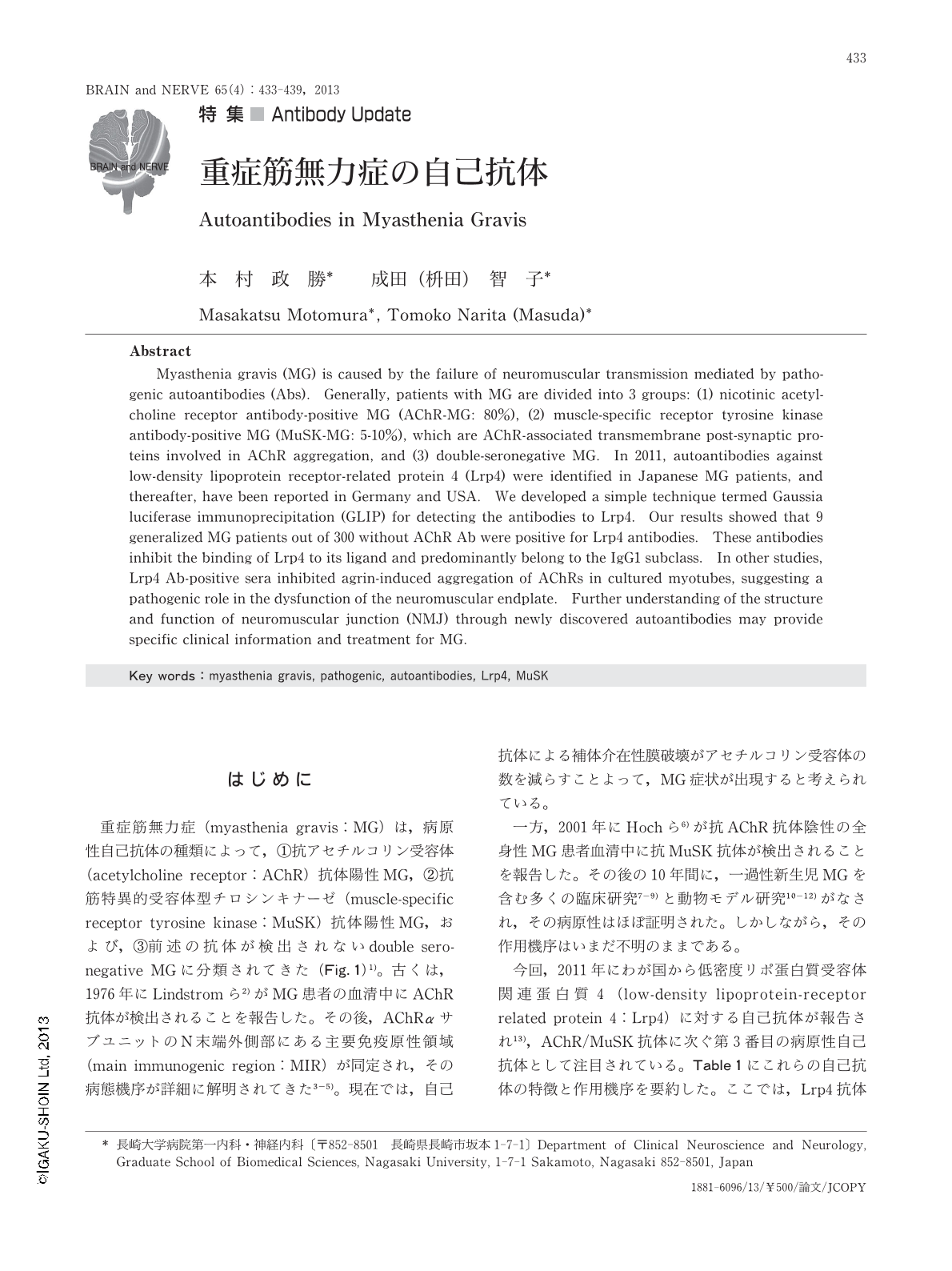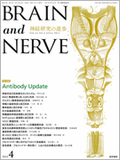Japanese
English
- 有料閲覧
- Abstract 文献概要
- 1ページ目 Look Inside
- 参考文献 Reference
はじめに
重症筋無力症(myasthenia gravis:MG)は,病原性自己抗体の種類によって,①抗アセチルコリン受容体(acetylcholine receptor:AChR)抗体陽性MG,②抗筋特異的受容体型チロシンキナーゼ(muscle-specific receptor tyrosine kinase:MuSK)抗体陽性MG,および,③前述の抗体が検出されないdouble seronegative MGに分類されてきた(Fig.1)1)。古くは,1976年にLindstromら2)がMG患者の血清中にAChR抗体が検出されることを報告した。その後,AChRαサブユニットのN末端外側部にある主要免疫原性領域(main immunogenic region:MIR)が同定され,その病態機序が詳細に解明されてきた3-5)。現在では,自己抗体による補体介在性膜破壊がアセチルコリン受容体の数を減らすことよって,MG症状が出現すると考えられている。
一方,2001年にHochら6)が抗AChR抗体陰性の全身性MG患者血清中に抗MuSK抗体が検出されることを報告した。その後の10年間に,一過性新生児MGを含む多くの臨床研究7-9)と動物モデル研究10-12)がなされ,その病原性はほぼ証明された。しかしながら,その作用機序はいまだ不明のままである。
今回,2011年にわが国から低密度リポ蛋白質受容体関連蛋白質4(low-density lipoprotein-receptor related protein 4:Lrp4)に対する自己抗体が報告され13),AChR/MuSK抗体に次ぐ第3番目の病原性自己抗体として注目されている。Table1にこれらの自己抗体の特徴と作用機序を要約した。ここでは,Lrp4抗体に焦点を当てて,発見の背景,臨床的意義,および,その作用機序について解説した。
Abstract
Myasthenia gravis (MG) is caused by the failure of neuromuscular transmission mediated by pathogenic autoantibodies (Abs). Generally, patients with MG are divided into 3 groups: (1) nicotinic acetylcholine receptor antibody-positive MG (AChR-MG: 80%), (2) muscle-specific receptor tyrosine kinase antibody-positive MG (MuSK-MG: 5-10%), which are AChR-associated transmembrane post-synaptic proteins involved in AChR aggregation, and (3) double-seronegative MG. In 2011, autoantibodies against low-density lipoprotein receptor-related protein 4 (Lrp4) were identified in Japanese MG patients, and thereafter, have been reported in Germany and USA. We developed a simple technique termed Gaussia luciferase immunoprecipitation (GLIP) for detecting the antibodies to Lrp4. Our results showed that 9 generalized MG patients out of 300 without AChR Ab were positive for Lrp4 antibodies. These antibodies inhibit the binding of Lrp4 to its ligand and predominantly belong to the IgG1 subclass. In other studies, Lrp4 Ab-positive sera inhibited agrin-induced aggregation of AChRs in cultured myotubes, suggesting a pathogenic role in the dysfunction of the neuromuscular endplate. Further understanding of the structure and function of neuromuscular junction (NMJ) through newly discovered autoantibodies may provide specific clinical information and treatment for MG.

Copyright © 2013, Igaku-Shoin Ltd. All rights reserved.


